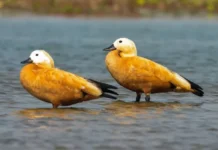TribalBookworms
[ Dr Bompi Riba ]
Flashback to the times when our forefathers were called ‘Abors’, a term deemed derogatory as it was an address for the barbaric savage tribes residing in both sides of the Brahmaputra valley. But the meaning of this term in the glossary provided in Tai Nyori’s A Freedom Movement in the Twilight: Tribal Patriotism in the North-Eastern Frontier Tracts of India(2022) says otherwise. Like any coin that has two sides, this term from the perspective of the native historian describes the free and independent nature of the Adi people, who did not yield nor submit to anyone. They were basically hills-men residing between the Dibang valley in the east, the Subansiri river in the west, Tibet in the north and the Brahmaputra in the south. These tribes were Doba/Galong (Galo) Abors, Minyong Abors, PadamAbors, Pasi Abors, Panggi Abors, etc. The term ‘Abor’ originated from the Assamese, ‘a’ and ‘bori’, meaning, ‘not’ and ‘subdued’ or ‘submitted’ respectively. In other words, ‘abor’ or ‘abori’ referred to someone who was not subjugated and was in fact independent. In his foreword to this book, Professor Maguni Charan Behera while deliberating on the dynamics of unequal power relations between the oral traditions of the pre-literate tribal communities and the written history of the “Brahmanical tradition of self-glorified higher social status in academics based on western rationality of superiority” (xxviii), he quotes an old African proverb that talks about how history will continue to extol the hunter at the cost of the lions until the latter’s voices are represented by their own historians. He acknowledges Dr Tai Nyori as “the historian of the lions” (xxviii) for presentingthe history of his community’s engagement in the freedom movement.
Usually, the simplistic representation of the tribals in popular narratives overlooks the logic behind their actions which might have also been politically motivated. History records the cause and effects of certain actions that result with eventful consequences. But when the community concerned is already marginalized from the lens of the colonial imagination, it becomes very easy to overlook the fact that they have also had history all along. In the official reports of the colonial officers, the Abors were frequently labelled as wayward, unruly, non-negotiable, non-reliable and violent. To add to their disadvantage, they were also uneducated and illiterate. In the popular imagination of the Abor expedition, the British officials and their armed forces, clad in their combat uniforms pitted against the semi-naked warriors apparently replicates the polarizing of the conflict between European modernism and tribal primitivism. For any modern society, written history foregrounds their sense of belonging, loss and alienation but for a community that do not have a script of their own, they rely heavily on their oral tradition. The narratives about the active presence of the Abors was recognized even during the Ahom reign, which is proved by the non-interference of the latter in the former’s practice of exacting conciliatory benefactions from the beheahs(gold washers) and fishermen from the plains, over whom they also claimed absolute dominion. Though this piece of information does not provide material for understanding the internal mechanism of the community life of the Abors, it does throw light on their sense of ownership of the Dihang and other rivers that flowed down from the hills. Their trading relations with the Tibetans also prove that they were not completely isolated as a tribe. They were also collecting tolls for timbers cut from the forests in their foothill. They had a sense of ownership of their land and were actually quite protective of it. This is evident in their resistance towards the entry of the British officials inside their territory.
The Abors came into contact with the English during the Anglo-Burmese War (1824-26). After capturing the capital of the Ahom kingdom, Rongpur in 1825, the British wanted to ensure if the source of the river Brahmaputra was Tsangpo. On the order of the East India Company, Lt Wilcox embarked on exploring the Subansiri valley on 28 November, 1825. It was there that he had his first encounter with the Abors,who had gone there to collect their annual offerings from the people residing there. Thereafter, Captain Neufville also reported the company about the assistance provided by the Abors against the Burmese. It was shortly followed by his report on their help in crushing the Mishmis and the Singphos as well. According to Dr Nyori, the first Anglo-Abor conflict (1848) was the outcome of a retributionmeted out on the beheahs (the gold washers) for repudiating the claim of the Abors over them by discontinuing to offer their conciliatory tributes andalso relocating from their old settlement to the new ones under British protection. As a consequence, the British authorities fixed an annual allowance for the Abors, known as ‘posa’ or ‘dodinpota’ in order to maintain peace with them. It is interesting to note that though the British considered them as a dangerous race of warriors, they maintained a friendly relation with them at least until late 1847. In return they had also received assistance from them against the Khamtis, Mishmis and the Singphos, who were actively antagonistic towards themduring that time.The conflict between the Abors and the English began in 1848 and lasted for sixty-four (64) years, culminating in the Anglo-Abor war of 1911-12.
Tai Nyori in his book A Freedom Movement in the Twilight focuses on tribal patriotism with specific reference to the Doba Abors (Galo Abors) against the British rule in the North East Frontier Tracts (present day Arunachal Pradesh). He counters the narrative that discredits the Congress movement initiated in the 1940s by Moje Riba, Moji Riba, Rimo Riba, LiginBomjen, Dagi Angu, Kore Bagra, Mormek Bagra, Gotu Bagra, Tamik Dabi, etc, to name a few. According to him, the narrative established by the British administrators and perpetuated by pro-British indigenous political interpreters was that it was not a political or freedom movement but a communal conflict arising out of boundary dispute between the Minyong Abors and the Doba Abors. Historians like Dr BB Pandey had also pointed out that the duration of the movement did not fall under the period of the Indian national movement – thus, disqualifying it as a freedom movement. While Tai Nyori counters these claims by referring to archives, autobiographies, history books and oral narratives, he asserts that it was indeed “a unique independent movement” (p111). According to him, after the Abors were defeated in the Anglo-Abor War of 1911-12, the British administered the divide-and-rule policy that generated the feeling of superiority and inferiority among them. The reason behind that was the division of the Abor areas or hills into two areas, viz, the administered area (Dokall) and the unadministered area (Ajanti). While developmental projects, such as construction of motorable roads, porter tracts, military cantonments, inspection bungalows and bazaar were carried out in the administered area with Pasighat as the centre, the unadministered area, which happened to belong to the Doba Abors was completely neglected. No facilities were provided to them. Even their movement was restricted and they could neither trade with the Tibetans nor the people of the administered area and Assam freely. They resented these unequal treatments. So they decided to start their own freedom movement against the British with the help of the Congress leaders in Assam.
The book emphasizes that the Congress did not have any contacts with the Abors until the latter reached out to them. It also stresses on the argument that the friction in the Abor area was never the result of communal tension and boundary issue between the Abor communities as claimed by the British authority. The initial objective of the Doba Abors’sjoining the Congress movement was to simply oppose the British rule as they also wanted developmental projects to be carried out in their area. If the time-span of the movement is to be considered, ie, between 1942 and 1948, then it is definitely very short. According to Dr Nyori, the North East Frontier Tracts (present Arunachal Pradesh) was neither completely under the imperial rule nor the Assam government. So the British administrators proposed to create a ‘crown colony’ under the New England scheme. This plan was proposed by Sir Robert Reid, the governor of Assam in the early 1940s. According to the Reid Plan, the colony was to include “the present hill areas of Arakan, Chin and Patkoi of Burma (Myanmar), the Chittagong Hill Tracts of present Bangladesh, Mizoram, North Kachar Hills and Karbi Anglong of Assam, Manipur, Nagaland, Tripura and Arunachal Pradesh” (p 112). The main reason cited in the plan for the creation of the colony was that the indigenous people of these regions, who practiced animism, needed protection from the onslaught of the politics of religion in India which was dominated by the conflict between the Hindus and the Muslims. Therefore, they should be kept separately from the Indian union.
According to Tai Nyori, the last British administrator in the Abor area was Peter Loren Seton James. Since he was the political officer, he was supposed to inform the people about the independent state of India, but since he wanted to continue the British rule in the region, he chose to keep them oblivious of the truth. Therefore, even after eight to nine months of independence, they were completely unaware of the fact that India had attained independence. Nyori adds that PLS James continued to discriminate and ill-treat the indigenous population by administering the divide-and-rule policy. Many Abor Congress leaders such as Moji Riba, Moje Riba, Rimo Riba, Kore Bagra, Dagi Angu, Kote Sora, etc, were imprisoned and fined for their resistant movement, which was considered anti-British and illegal. But they continued to resist the future under British administration and worked tirelessly to report about their oppressive rule to the Congress leaders in Assam. And finally, they were successful in expressing their opinion in favour of India and Congress rule to the Bordoloi sub-committee that sealed the fate of the British rule in the Abor hills/area. Tai Nyori posits that it was only after the removal of the British administrators, including PLSJames, that the Abors became truly free. He also claims that chronologically, their freedom movement follows the Indian national movement. Since the duration of it was quite short, he calls it a unique freedom movement in the twilight. (Dr Bompi Riba is an assistant professor in the English department of Rajiv Gandhi University. She is also a member of the APLS and Din Din Club.)







